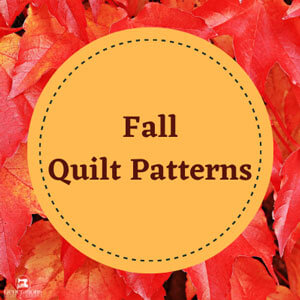This post contains affiliate links for which I receive compensation
Thread tension for free motion quilting is totally wonky
by Kelly
(West Chester, PA)
Kelly writes...
Hi!First off, just want to say how helpful your site has been for me =0)
This is kind of a multiple part question.
I have recently purchased a Baby Lock Ellure. I learned to free motion quilt on my first machine, a Singer Confidence.
Now that I am FMQing on my Baby Lock, I am having tension problems. My first problem that was happening was when I was trying to use a different color thread on the top and bottom. No matter what I did to top thread tension I could not get one color or the other to not show thru on the other side.
I was going up one thread tension at a time and when I finally got the white to not show thru on the bottom, the brown would show up on the top. I gave up on that and decided to just use white on both top and bottom.
My main question is...how high is too high for top thread tension?
I am getting loops on the bottom unless I put my top thread tension up really high...it is currently at 7.6. My old machine didn't even have the option to go that high!
Let me say, I read your answer to this post Sewing Machine Tension Question and have done all of these things...new needle, re-threading.
I seem to get correct thread tension, when I have it up this high, I'm just wondering if something else bad will happen having it so high. I have thought about adjusting my bobbin tension, but for the life of me can't figure it out on this machine and there is not a mention of it in the instruction guide. Sorry for the very long winded question!
To sum it up, here are my questions:
- Any suggestion for using different color threads on top and bottom without one showing thru?
- Is there such a thing as too high for top thread tension?
- Any idea how to loosen bobbin tension on a Baby Lock Ellure?
Kelly
Our reply...
I'm so glad to hear you're enjoying the site. It's a lot of fun to work on and hearing that it is helpful to you is icing on the cake!There are a couple of things that occur to me as I read your information. I am concerned that you are having these tension issues when you are changing just the thread color...I am assuming that the type and weight of thread is the same. There should be virtually no tension change from color to color if the type and weight are the same. You did exactly what I would've done, adjust a bit and test, and repeat until the stitch is balanced.
To answer your question about what is too high a setting for your needle tension, I am assuming that if the number is there, it can be used. However...
...my experience is that the tension settings for a particular combination of threads is pretty close to identical for both free motion quilting and quilting with a walking foot. There may be a little bit of tweaking depending on the density of the stitching and the curviness of the designs.
If you are using a 50 wt cotton like Aurifil, I would not expect to have to make the large adjustments that you are needing to make. I would also not expect to need to adjust the bobbin tension. (There is a screw on the bobbin case to make the adjustments--I've never used an Ellure, but I assume that you can lift out the bobbin case to make the change, you'll need to check your manual for the specifics.)
Given that you've double checked everything, what I would do at this point is (using the same threads) install a regular presser foot, raise the feed dogs and then stitch some straight lines through two layers of fabric. How is the tension then? Are you able to create a balanced stitch at normal settings?
If so, double check your manual for any other additional settings you may need to adjust to free motion quilting. Immediately switch back to your darning foot and try some stitches on a practice quilt sandwich. If you still find that you've got to increase your settings to (almost) the maximum, take your machine into the dealer for them to take a look at.
I wish I had the magic spell that would cure your problem, but I'm afraid it's more a matter of isolating where the problem is because you can fix it.
Readers, as always, your suggestions are welcome. Just use the 'Comments' link found below.
Piecefully,
Julie Baird
Editor
Comments for Thread tension for free motion quilting is totally wonky
|
||
|
||
|
||
|
||
|
||
|
||
|
||













